This article was co-authored by Carrie Noriega, MD and by wikiHow staff writer, Jessica Gibson. Dr. Noriega is a Board Certified Obstetrician & Gynecologist and medical writer in Colorado. She specializes in women’s health, rheumatology, pulmonology, infectious disease, and gastroenterology. She received her MD from the Creighton School of Medicine in Omaha, Nebraska and completed her residency at the University of Missouri - Kansas City in 2005.
wikiHow marks an article as reader-approved once it receives enough positive feedback. In this case, 89% of readers who voted found the article helpful, earning it our reader-approved status.
This article has been viewed 397,001 times.
If your doctor has prescribed vaginal suppositories, you may be wondering how they work. A suppository is a medicine delivery system that can be used to insert various drugs, herbs, hormones or lubricants into the vagina. Once the suppository is in your vagina, it will dissolve, releasing the medicine to treat a condition of the vagina (like a yeast infection) or the entire body (like hormone treatments). If you're inserting a tablet or ointment, the suppository might come with a plastic applicator to help you insert it.[1]
Steps
Inserting the Suppository
-
1Clean your vagina. Use a mild soap to gently wash the outer parts of your vagina and the area around it. Don’t wash out the inside of your vagina. Make sure to wash your hands well. Rinse your vaginal area and hands to completely remove the soap. Pat your skin dry using a clean cotton cloth.
- Cleaning your vagina and hands can prevent the spread of bacteria into your vagina as you insert the suppository.
-
2Prepare the suppository. Unwrap the suppository applicator from its packaging and determine if it's already pre-filled with the cream or tablet. If it isn't pre-filled, hold the applicator between your thumb and forefinger and use your other hand to place the cream or tablet at the other end of the applicator.
- To fill an applicator with a cream suppository, connect the tube of cream to the applicator so that it's tightly attached. Squeeze the tube of cream till the correct dose is in the applicator. Remove the tube and save it for your next dose.
- The applicator provided for delivering a cream suppository usually has marks on it that tell you how much is in the applicator, such as 1 gram, 2 grams, etc.
-
3Get your body into position. Stand with your legs and knees apart. Raise one foot up on a stool, the edge of the toilet, the bathtub or a chair. Or, you can lie on your back with your knees bent. Your feet should be about shoulder width apart.
- Both of these positions will give you easier access to your vaginal opening which will make it easier to insert the suppository.
-
4Open the lips of your vulva. Use your non-dominant hand to separate the lips (labia) of your vulva. This will expose your vagina. Keep it exposed while you use your dominant hand to place the suppository at the vaginal opening.
- Although it may seem difficult at first, try to relax. Remind yourself that it will take a little getting used to and you can continue to try until you successfully insert the suppository.
-
5Push the suppository into your vagina. Insert the suppository applicator or use your forefinger to insert the suppository into your vagina. Push it as far as is comfortable so that the suppository is in your vagina. If you're using an applicator, push the plunger so all of the suppository is delivered to your vagina.
- You'll know the suppository is in your vagina when about half the applicator is in the vagina or your forefinger is in the vagina up to the knuckle.
-
6Dispose of the applicator. Remove the applicator and completely wash it with some gentle soap and water if it's reusable or throw it away if it's not. Wash and dry your hands. It may take up to an hour for the suppository to completely dissolve. At that point, you may notice leaking if you're up walking around.
- Follow the manufacturer's or doctor's instructions for your specific suppository.
- You probably won't feel the suppository once you've inserted it and you won't need to remove it since it will dissolve in your vagina.
Using Vaginal Suppositories Effectively
-
1Store the suppository at room temperature. Suppositories are usually made of either fats or water-soluble polymers. They'll begin to melt in your body once you've inserted them into your vagina. To prevent suppositories from melting before you've inserted them, store them at room temperature. Consider refrigerating them if you live somewhere hot, where they're more likely to melt at room temperature.[2]
- The melting process will release the drugs, herbs, hormones, or lubricants into your vagina.
-
2Use suppositories even during your period. If you've been prescribed a suppository, your doctor believes you'll benefit the most from that delivery system. If you start to menstruate, continue to use the suppositories as your doctor prescribed. Just make sure to use a sanitary pad instead of a tampon.
- If you forget a dose, just remember to insert the suppository at the next scheduled time. Don't take two doses at once.
-
3Insert suppositories at night. Since the suppositories will leak discharge as they dissolve in your vagina, you may want to insert them at night before you go to bed. If you need to use them during the day, consider wearing a sanitary pad or liner to collect any leakage.[3]
- Avoid using a tampon to soak up the leakage. Using a tampon will absorb the medication, making it less effective. Tampons will also irritate your vaginal walls.
-
4Watch for side effects. Since vaginal suppositories are used for a variety of medical conditions (like yeast or bacterial infections, vaginal dryness, and reproductive hormonal imbalances), side effects may differ. Most side effects don't require medical attention. In general, you may experience:
- Vaginal discomfort
- Vaginal dryness
- Burning or itching
- Discharge from the vagina as the suppository dissolves
-
5Know when to get medical attention. Let your physician know if you have any pain or discomfort. If you think you're having an allergic reaction, contact your doctor. Signs of an allergic reaction include swelling of the vagina and vulva area, itching, hives and tightness in the chest. Check the document that came with your suppository for specific allergy risks.
- Talk with your doctor about whether or not you should refrain from sexual intercourse while you're using suppositories.
- If you are having problems using the suppository applicator, then talk to your doctor about this. Your doctor or a nurse may be able to teach you how to use it during an office visit.
References
About This Article
If you need to insert a vaginal suppository, do it at night before bed since the suppository will leak as it dissolves. It may take up to an hour for the suppository to dissolve, so you might notice some leaking if you’re walking around. Before you insert the suppository, clean the outer parts of your vagina using a mild soap to prevent the spread of bacteria. Once your vaginal area is clean, unwrap the suppository applicator and prep it by placing the cream or tablet at the end if it isn’t already pre-filled. Then, stand with your legs and knees apart and raise one foot up on a stool or toilet. In this position, open the lips of your vulva and push the suppository into your vagina as far as you can. Push the plunger to release the suppository, then dispose of the applicator. For more tips, like how to store your suppositories until you need to use them again, read on.

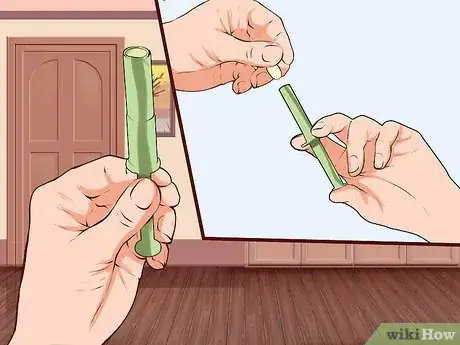
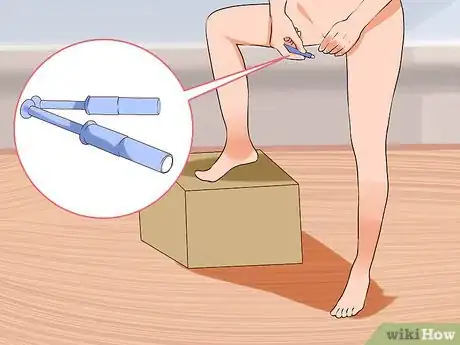
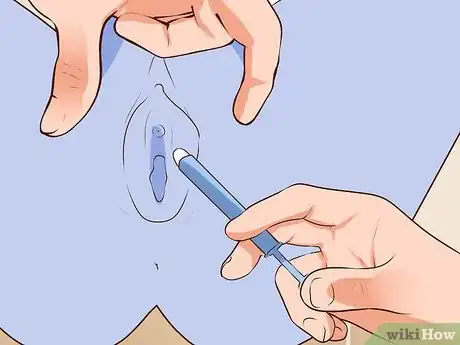
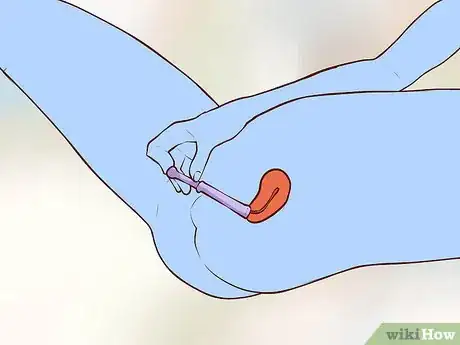

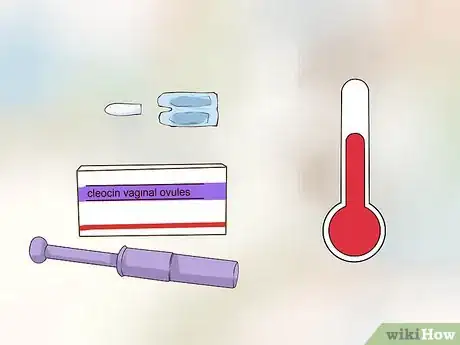
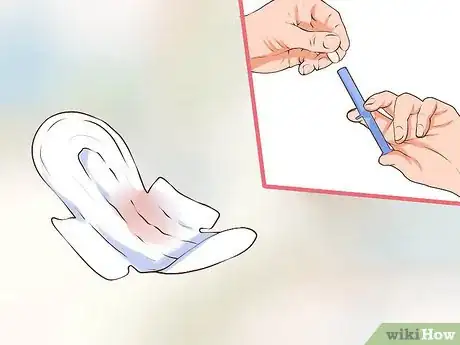
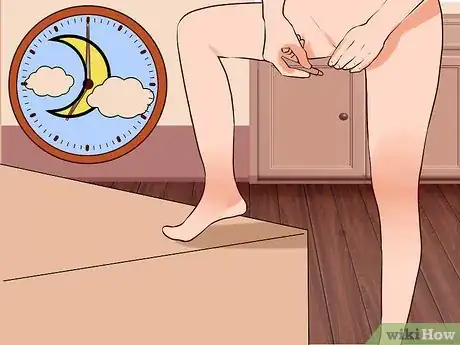



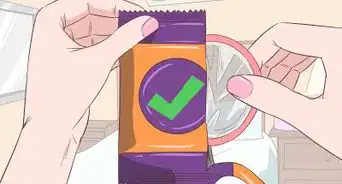

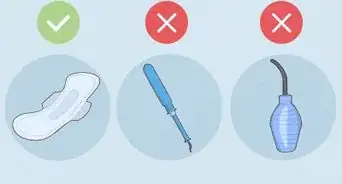





-Step-10-Version-2.webp)














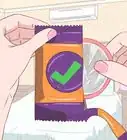

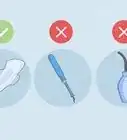



































Medical Disclaimer
The content of this article is not intended to be a substitute for professional medical advice, examination, diagnosis, or treatment. You should always contact your doctor or other qualified healthcare professional before starting, changing, or stopping any kind of health treatment.
Read More...